Medieval History
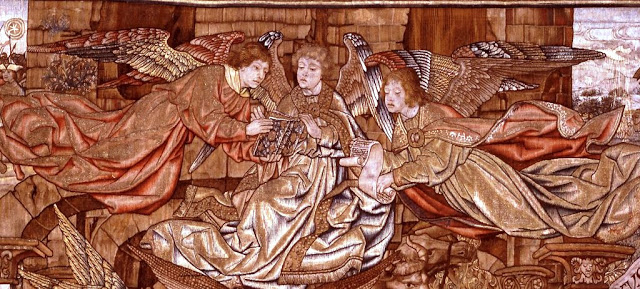
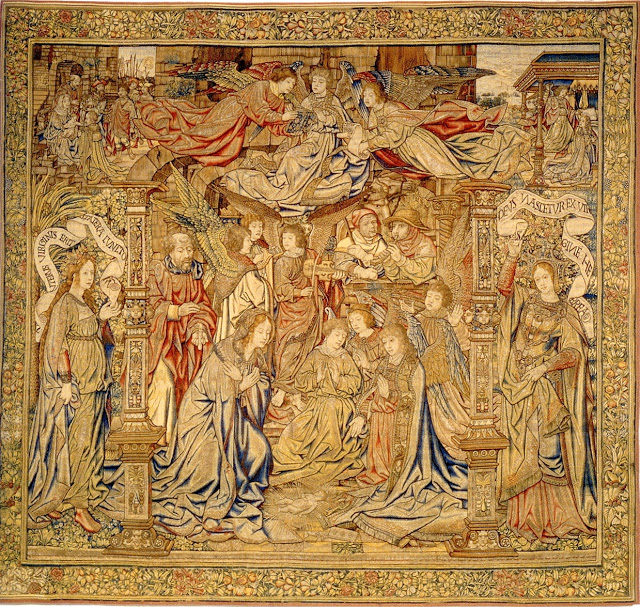
- Is This How The Bayeux Tapestry Would Have Ended?
The Alderney Bayeux Tapestry The famous Bayeux Tapestry ends with the defeat of King Harold's army and the flight of the Anglo-Saxon soldiers. However, most scholars believe that the original tapestry would have ended with the coronation of William...
- New Research On How The Bayeux Tapestry Was Made
A University of Manchester researcher has thrown new light on how the world famous Bayeux Tapestry was made over 900 years ago. Alex Makin ?a professional embroiderer who was trained at one the country?s most prestigious institutions ? says the same...
- Warwick Library Hosts Medieval Tapestry Conservation Program On March 20
The Albert Wisner Public Library will present the ?Restoration of the Cloisters? Redemption Tapestry? on Sunday March 20, at 2 p.m. in the Community Room. Warwick resident Tina Kane will discuss the landmark medieval tapestry conservation project she...
- Smattering Of 12th Century Art From Norway
Church W. portal - decoration on right jamb. Al, Norway, 12th century. Tapestries are my favorite art form, of all time. Love love love. This is the Baldishoel Tapestry: fragment: detail of April and May. "The two months of April and May - the part of...
- News From Hungarian Museums
Medieval and Renaissance tapestries on view at Esztergom Calvary Tournai, late 15th century Esztergom, Christian Museum An exhibition of tapestries has been on view at the Christian Museum in Esztergom since May. The Museum holds a significant...
Medieval History
A Nativity Tapestry from Brussels (Merry Christmas!)

I would like to wish Merry Christmas and happy holidays to all my readers with a detail from the most beautiful late medieval tapestry in the collection of the Museum of Applied Arts, Budapest. The central field of the tapestry depicts the Nativity, or more specifically, the Adoration of the baby Jesus - these beautiful angels hover over the scene. The Nativity image is of a type which became widespread upon the influence of late medieval mysticism: the newborn Saviour lying on the ground is adored by his mother the Virgin Mary and angels. On either side a sibyl is standing holding a scroll with the text of her prophecy in her hands. In the top left corner the Adoration of the Magi, in the right corner the Annunciation are seen. (see the full image below).
An exact analogy of the tapestry can be found in the Museo Diocesano in Trento, as the first piece of a seven-part cycle depicting Christ?s Passion. That cycle was purchased by Bernardo Cles, the prince-archbishop of Trento (1514?1539) from Joris van Lickau, a merchant of Antwerp in 1531. The tapestries were made earlier: the piece showing the Carrying of the Cross features the date 1507, and in another one the name of the leader of the Brussels weaving workshop, Pieter van Aelst (ca. 1450 ? 1531/1533) can also be read.
The origins of the images on the tapestry can be traced to 15th century Flemish painting: the Annunciation follows the popular composition of Rogier van der Weyden (1399/1400 ? 1464), while the central depiction was influenced, among others, by Robert Campin (ca. 1375 ? 1444). The prototype for the Adoration is a print in Albrecht Dürer?s engraved cycle of the life of the Virgin (about 1500 ? 1502). Based on the stylistic features of the tapestry, the composition can be attributed to Jan van Roome of Brussels, court painter of Margaret of Austria (demonstrable between 1498 and 1521), who is well-known from contemporary sources. The tapestry comes to the museum from the Cathedral of Gy?r - and probably originates from bishop Demeter Náprágyi?s (1559 ? 1619) bequest in 1619. In 1914 Francis Joseph I, Emperor of Austria and King of Hungary, purchased it and donated it to the Society of the Friends of the Museum. (Money from the sale went for the renovation of the cathedral.)

Nativity Tapestry, Brussels, c. 1510. Pieter van Aelst?s workshop, Jan van Roome?s (?) design
Wool, silk and metal thread, woven with gobelin technique, H.: 275 cm W.: 260 cm
Budapest, Museum of Applied Arts, Inv.no.: 18328
(More details below!)
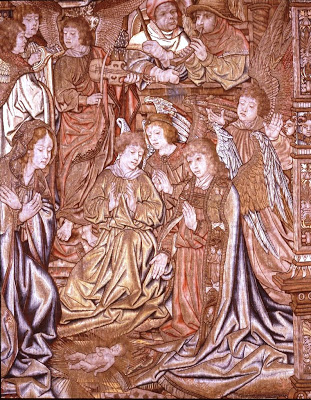
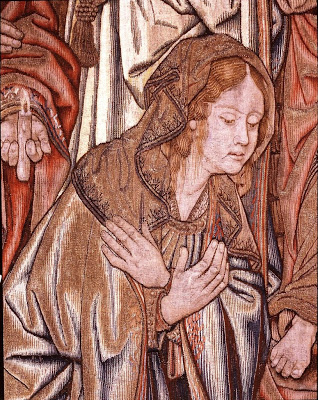
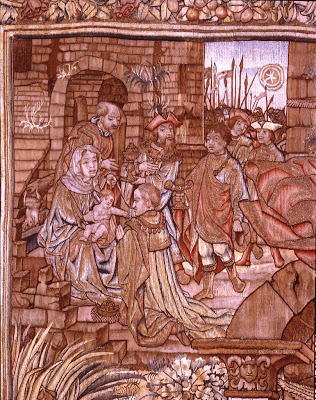



- Is This How The Bayeux Tapestry Would Have Ended?
The Alderney Bayeux Tapestry The famous Bayeux Tapestry ends with the defeat of King Harold's army and the flight of the Anglo-Saxon soldiers. However, most scholars believe that the original tapestry would have ended with the coronation of William...
- New Research On How The Bayeux Tapestry Was Made
A University of Manchester researcher has thrown new light on how the world famous Bayeux Tapestry was made over 900 years ago. Alex Makin ?a professional embroiderer who was trained at one the country?s most prestigious institutions ? says the same...
- Warwick Library Hosts Medieval Tapestry Conservation Program On March 20
The Albert Wisner Public Library will present the ?Restoration of the Cloisters? Redemption Tapestry? on Sunday March 20, at 2 p.m. in the Community Room. Warwick resident Tina Kane will discuss the landmark medieval tapestry conservation project she...
- Smattering Of 12th Century Art From Norway
Church W. portal - decoration on right jamb. Al, Norway, 12th century. Tapestries are my favorite art form, of all time. Love love love. This is the Baldishoel Tapestry: fragment: detail of April and May. "The two months of April and May - the part of...
- News From Hungarian Museums
Medieval and Renaissance tapestries on view at Esztergom Calvary Tournai, late 15th century Esztergom, Christian Museum An exhibition of tapestries has been on view at the Christian Museum in Esztergom since May. The Museum holds a significant...
